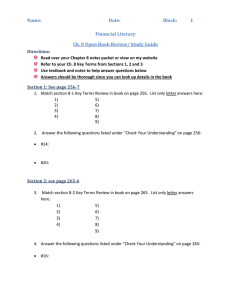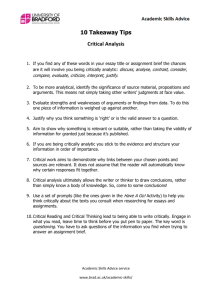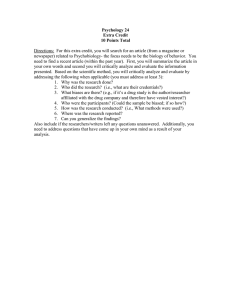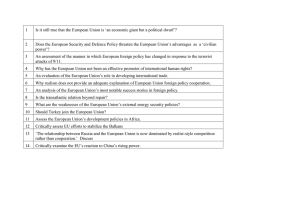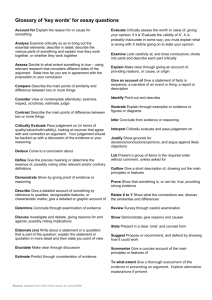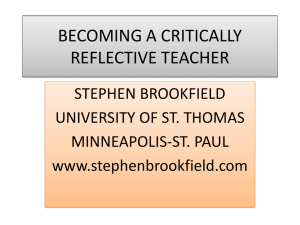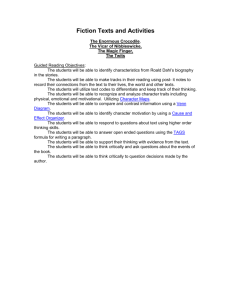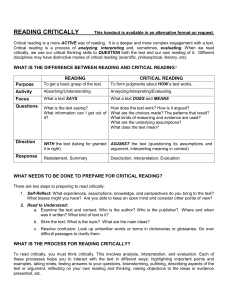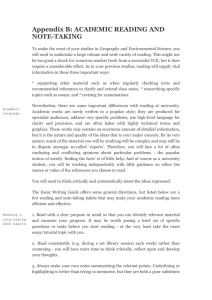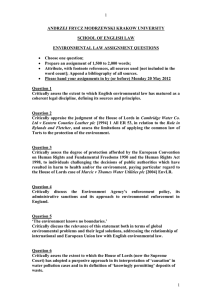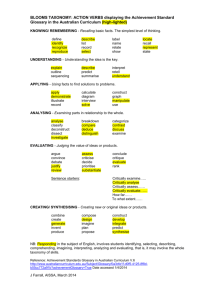Critical thinking
advertisement
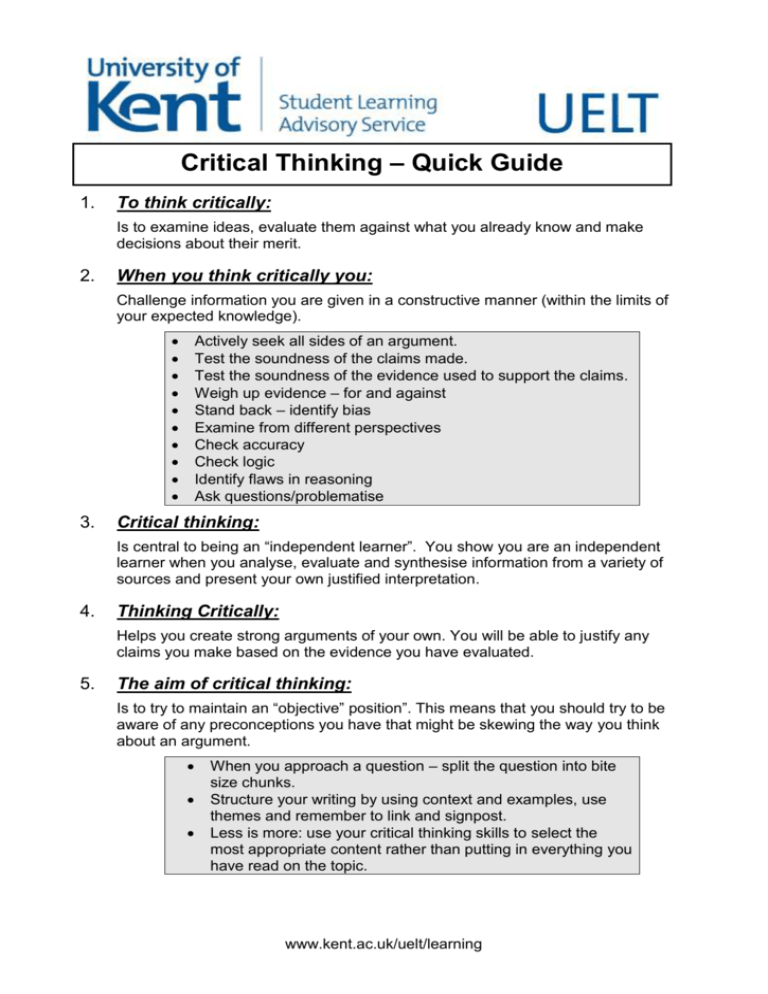
Critical Thinking – Quick Guide 1. To think critically: Is to examine ideas, evaluate them against what you already know and make decisions about their merit. 2. When you think critically you: Challenge information you are given in a constructive manner (within the limits of your expected knowledge). 3. Actively seek all sides of an argument. Test the soundness of the claims made. Test the soundness of the evidence used to support the claims. Weigh up evidence – for and against Stand back – identify bias Examine from different perspectives Check accuracy Check logic Identify flaws in reasoning Ask questions/problematise Critical thinking: Is central to being an “independent learner”. You show you are an independent learner when you analyse, evaluate and synthesise information from a variety of sources and present your own justified interpretation. 4. Thinking Critically: Helps you create strong arguments of your own. You will be able to justify any claims you make based on the evidence you have evaluated. 5. The aim of critical thinking: Is to try to maintain an “objective” position”. This means that you should try to be aware of any preconceptions you have that might be skewing the way you think about an argument. When you approach a question – split the question into bite size chunks. Structure your writing by using context and examples, use themes and remember to link and signpost. Less is more: use your critical thinking skills to select the most appropriate content rather than putting in everything you have read on the topic. www.kent.ac.uk/uelt/learning
